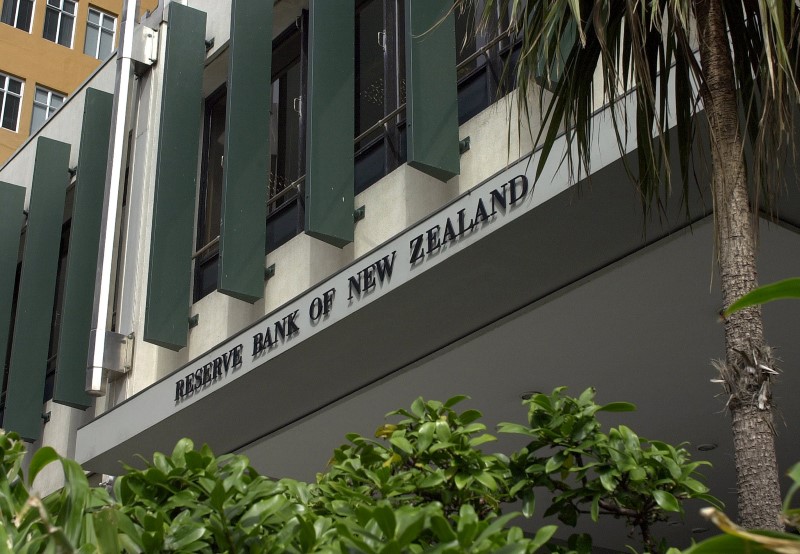(Bloomberg) -- New Zealand’s central bank said it expects to keep interest rates at a record low for another two years as the outlook for economic growth weakens.
Reserve Bank Governor Adrian Orr held the official cash rate at 1.75 percent and left the door open to a cut if needed. “We expect to keep the OCR at this level through 2019 and into 2020, longer than we projected in our May statement,” he said Thursday in Wellington. “The direction of our next OCR move could be up or down.”
The central bank lowered its forecast for economic growth over the coming year amid a slump in business confidence, a cooler housing market and risks to New Zealand exports from global trade tensions. It pushed out its forecast for the first rate increase to the third quarter of 2020, a full year later than it predicted in May. The rate has been at 1.75 percent since the end of 2016.
The kiwi dollar fell almost half a U.S. cent after the decision and traded at 67.08 cents at 9:53 a.m. in Wellington from 67.47 cents beforehand. The governor made no comment about the level of the exchange rate in his statement.
“We continue to expect that the OCR will stay on hold until November 2019, though the RBNZ’s new view is it will be on hold for longer,” said Nick Tuffley, chief economist at ASB Bank Ltd. in Auckland. “The important thing is that there is absolutely no urgency for the OCR to increase for a considerable period.”
Confidence, Housing
The RBNZ forecast economic growth of 2.9 percent in the year ending March 31. That’s less than the 3.3 percent it projected in May. Business confidence fell to a 10-year low in July, according to ANZ Bank New Zealand’s monthly survey. House price inflation last month was the slowest since October.
“The decline in GDP growth over the past year suggests momentum in the economy may have eased,” the RBNZ said in today’s monetary policy statement. “While growth is expected to pick up, there are a number of downside risks to this outlook. Reflecting a weaker outlook for capacity pressure, the projected path for the OCR is flat for longer than in the May statement.”
The RBNZ now expects that inflation will reach the midpoint of the 1-3 percent band it targets in the first quarter of 2021, later than the late 2020 timing projected in May.
Prices rose 1.5 percent in the year through June 30 and inflation is being stoked by higher fuel prices and more expensive imports as the currency declines. The central bank’s core inflation gauge accelerated to 1.7 percent in the second quarter, the fastest in seven years.
“There are welcome early signs of core inflation rising,” Orr said. Still, the path to 2 percent for headline inflation “may be bumpy” and the bank would look through any volatility caused by changes in global oil prices, a lower exchange rate and announced petrol excise tax rises, he said.
New Zealand’s labor market has tightened, the RBNZ said. The jobless rate unexpectedly rose to 4.5 percent in the second quarter even as jobs growth accelerated. Wage growth quickened as a higher minimum wage was introduced, and pressure on pay rates is expected to build amid skill shortages and some aggressive public-sector wage demands.
“Employment is roughly around its maximum sustainable level,” Orr said. “We expect the unemployment rate to decline modestly from its current level.”
All economists surveyed by Bloomberg predicted today’s decision, and most expected the central bank to start tightening policy in the second half of next year.
“With GDP growth declining, we expect only a gradual increase in inflation,” the RBNZ said. “Stimulatory monetary policy remains necessary to ensure inflation continues to rise towards the target mid-point.”
(Updates with Orr comments throughout.)
